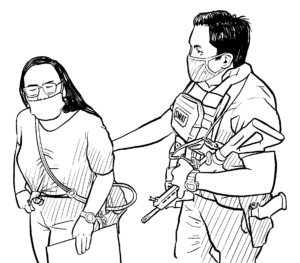Biden set to intensify US-China military rivalry


The newly installed Biden administration wasted no time in consolidating US military power in the Asia-Pacific region. It has taken successive measures to intensify its military rivalry with China.
Last March 11, the first Quadrilateral Security Dialogue or “Quad” with heads of Australia, Japan, India and US was held to push forwards the US’ vaccine diplomacy in the region. The meeting ended with the agreement to give India $1 billion to manufacture and sell vaccines in Asia by the end of 2022. This is to counter China’s vaccine diplomacy which covered the Philippines, Indonesia and other countries close to India. This is also an attempt to counter criticisms of the the US hoarding milions of vaccine doses in the midst of widespread shortage.
The Quad is seen as a US military alliance similar to the North Atlantic Treaty Organization. Since it was established by the Obama administration in 2004, it has strived to strengthen links with India against China.
To cover India, its nearby countries and seas, the US expanded the US Pacific Area Command’s area of operations last 2018. It established the Indo-Pacific Area Command to dominate both the Indian Ocean and Pacific (which covers 51% of the world) and encircle China from both seas. The Indo-Pacom aimed to launch more frequent patrols in conjunction with China near islands the latter claimed in the South China Sea. It also aimed to dump and sell weapons and hold bigger and more frequent military exercises.
From 2018, US power projection became more frequent in the South China Sea. It launched five sea operations and eight in 2019 in the name of “freedom of navigation.” Under the pandemic, it undertook nine such operations and 13 transits across the Taiwan Strait. It flew fighter planes using fake or private identification. Most of its ships and planes passed by, if not stationed, in Philippine seas.
These operations are set to intensify under the Biden administration. Last March 2, the Indo-Pacom asked the US Congress for a $27 billion budget in the next five years in what is now called the Pacific Deterrence Initiative, a comprehensive military plan to counter China. This was previously called the Pacific Defense Initiative and was given a budget of $6 billion in 2020 and initially provided $4.68 billion for 2021.
Indo-Pacom military officials insist that defense from sea and air is no longer enough. They seek to establish a wider network of ground-based missiles and weapons in what it calls the “first island chain.” This pertains to Taiwan, Okinawa (Japan) and the western side of the Philippines.
In particular, the Indo-Pacom asked for $408 million for ground-based weapons and missiles for 2021 and an additional $2.9 billion for the next five years. It aims to create an anti-China missile network with the minimum reach of 500 kilometers. The US claims that China has 1,250 such missiles that can reach the first island chain while the US has none due to previous prohibition of the Intermediate-Range Nuclear Forces Treaty. The US did not reenact the treaty when it lapsed in 2019 and manufacturing of missiles with the reach of 500 to 5,500 kilometers is now in full swing in the country.
Aside from Japan and Korea where the US have military bases, it has traditionally stockpiled weapons and missiles in the Philippines. Its locations include its previous base in Subic, Zambales, bases it has constructed in Pawalan and other AFP military camps which fall under the Enhanced Defense Cooperation Agreement.











